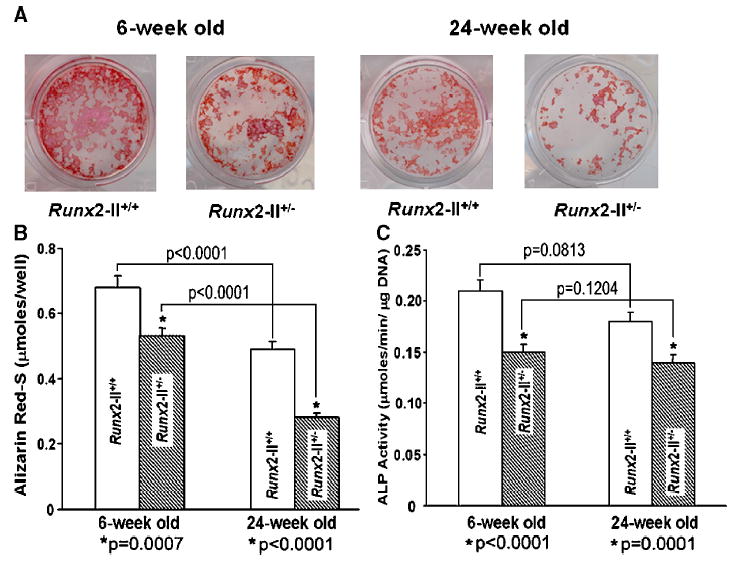Fig. 5.

Assessment of osteoblastic differentiation in BMSCs cultures from 6- and 24-week wild-type and mutant mice. (A) Histochemical staining of mineralization nodules. BMSCs from 6- and 24-week mice were cultured for 12 days in differentiation media and stained with Alizarin Red-S. There is an age-dependent decrease in mineralized nodule formation and the heterozygous BMSC cultures showed less abundant mineralized nodules. (B) Quantification of mineralization. Alizarin Red-S was extracted with 10% cetylpyridinium chloride and quantified as described in Materials and methods. The heterozygous BMSCs had significantly lower Alizarin Red-S accumulation at day 12 of culture compared with age-matched wild type. (C) Alkaline phosphatase (ALP) activity. The heterozygous BMSCs had significantly lower ALP activity at day 8 of culture compared with age-matched wild-type, indicating reduced osteoblast function in Runx2-II mutant mice. Data represent the mean ± SEM. *Difference from wild-type Runx2-II+/+ mice at P values specified below the bar graft at each time point. The time-dependent decrements in mineralization but not ALP activity at 6 and 24 weeks were also significantly different (as indicated by brackets above the bar graphs).
